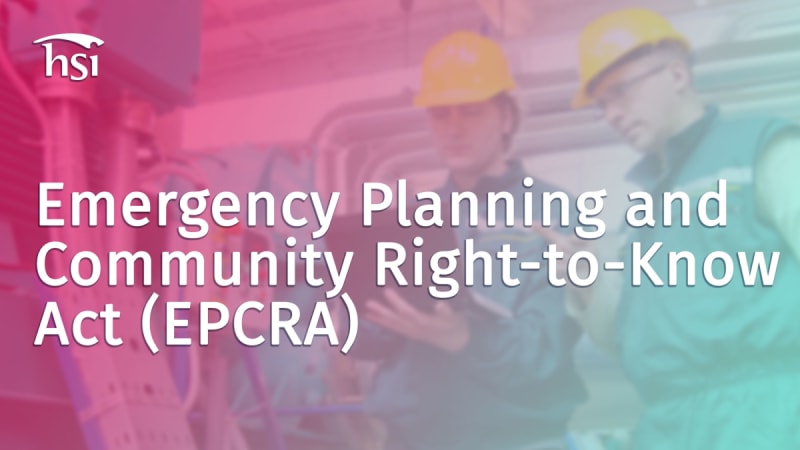What you'll learn
- Identify the origin and goals of the EPCRA regulation.
- Identify the four specific types of chemicals listed in the regulation.
- Identify the emergency planning requirements of Section 302 and 303.
- Identify the emergency release notification requirements of Section 304, including release possibilities at a facility.
- Identify the requirements and exemptions for SDS submissions in Section 311 and chemical inventory reporting in Section 312, specifically Tier II reporting.
- Identify the requirements of toxic chemical release reporting in Section 313.
Course Description
Emergency planning is critical for operations that handle or produce significant quantities of hazardous materials. Because of the danger to employees working at these facilities and to the general public presented by the harmful release of hazardous materials, likes noxious, combustible gases and waste, people have a right to know about the potential for danger involved in related operations.








